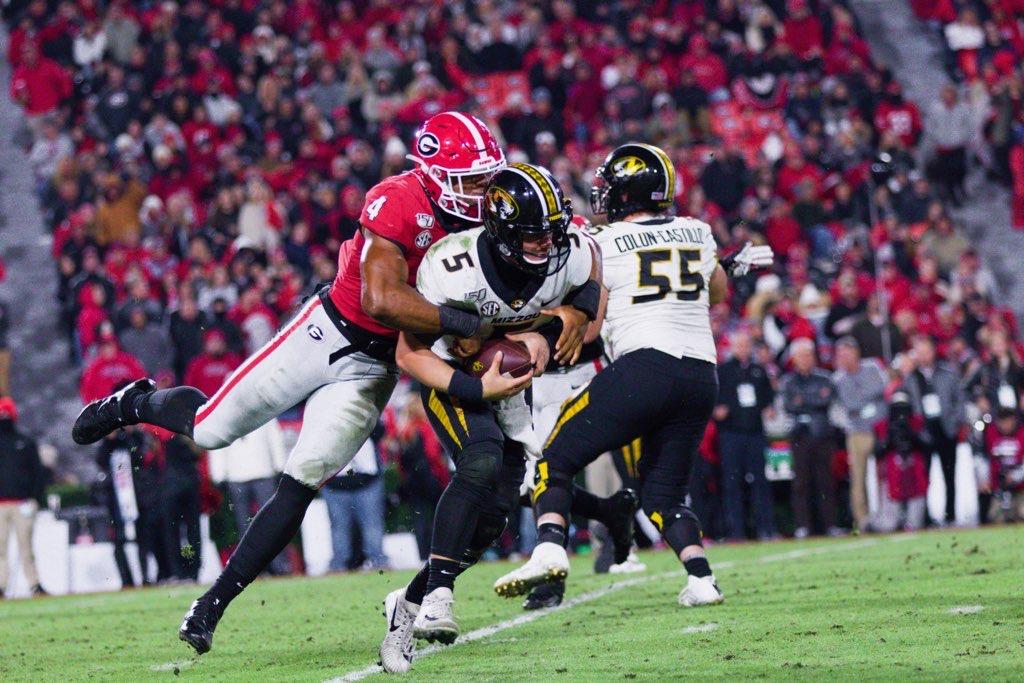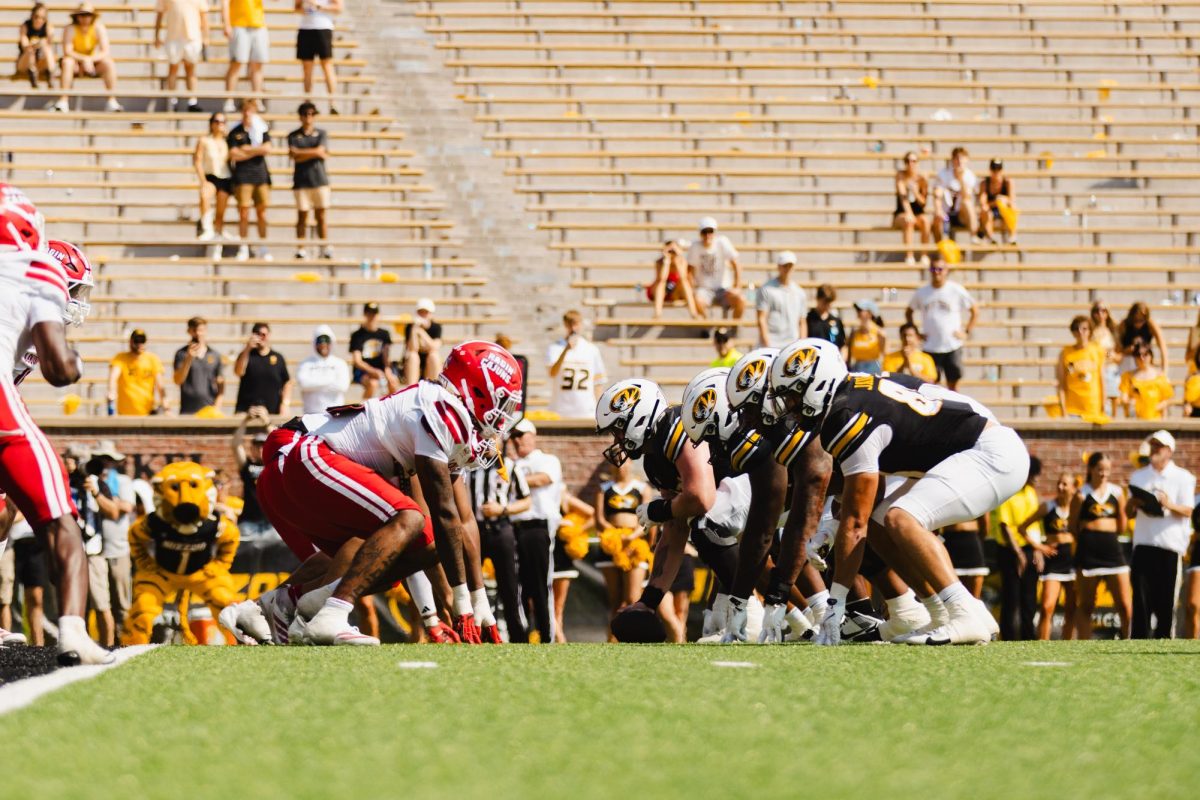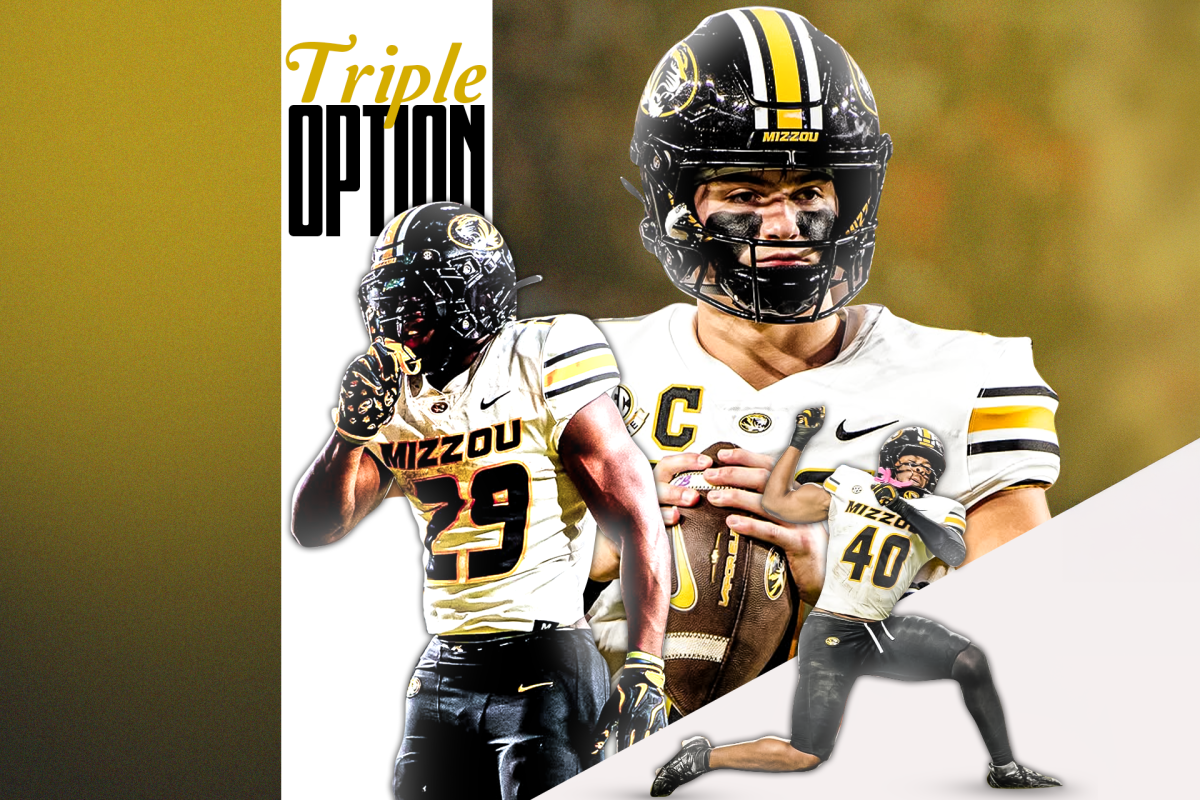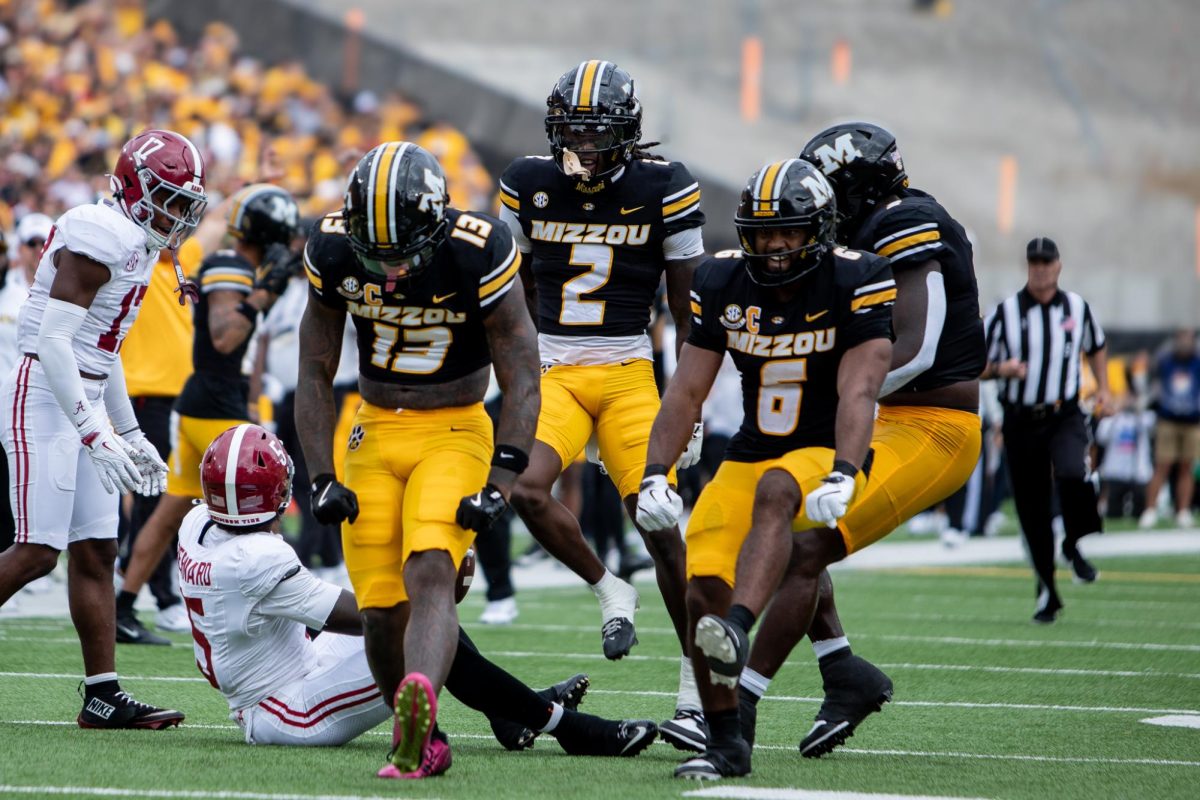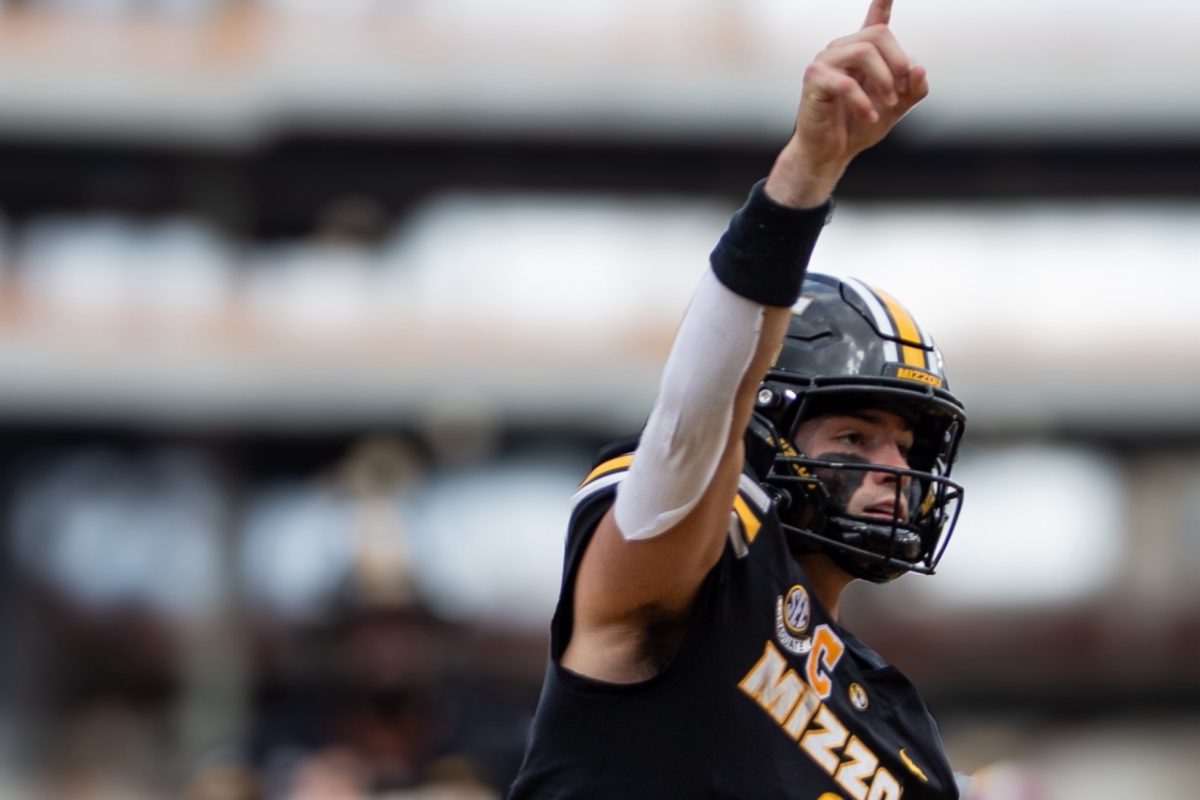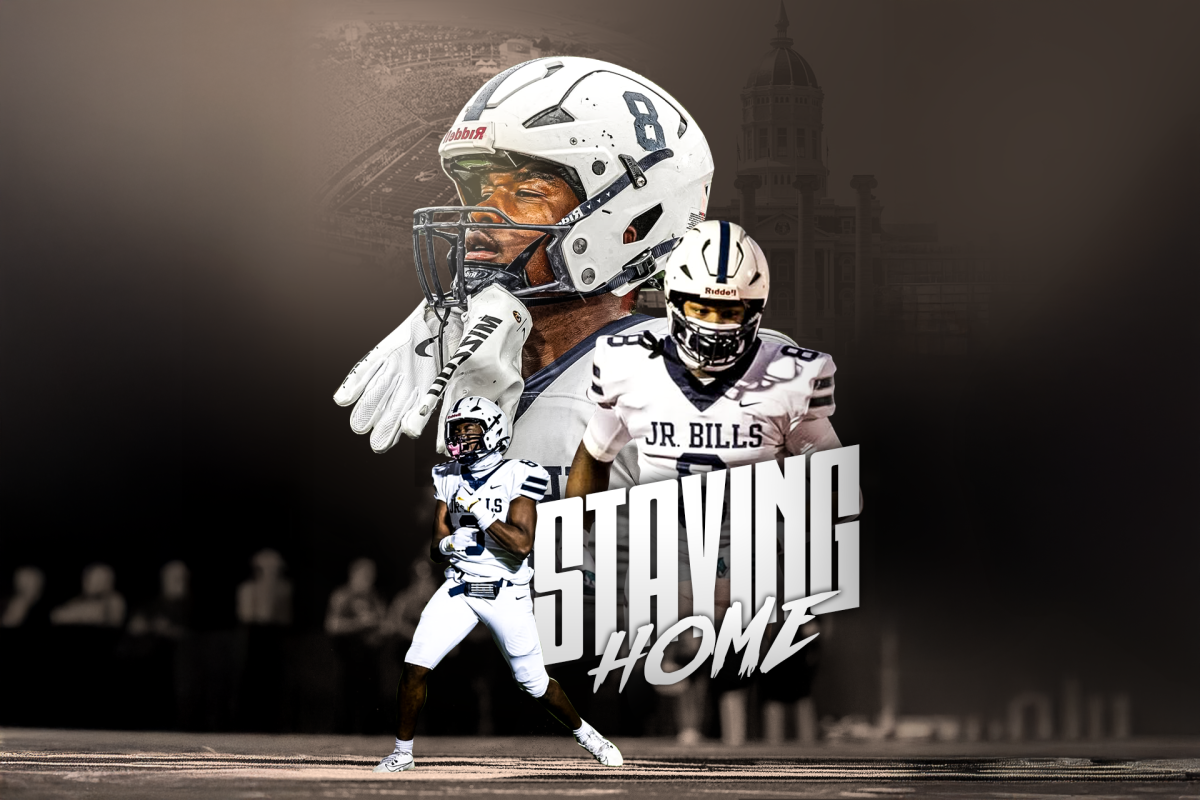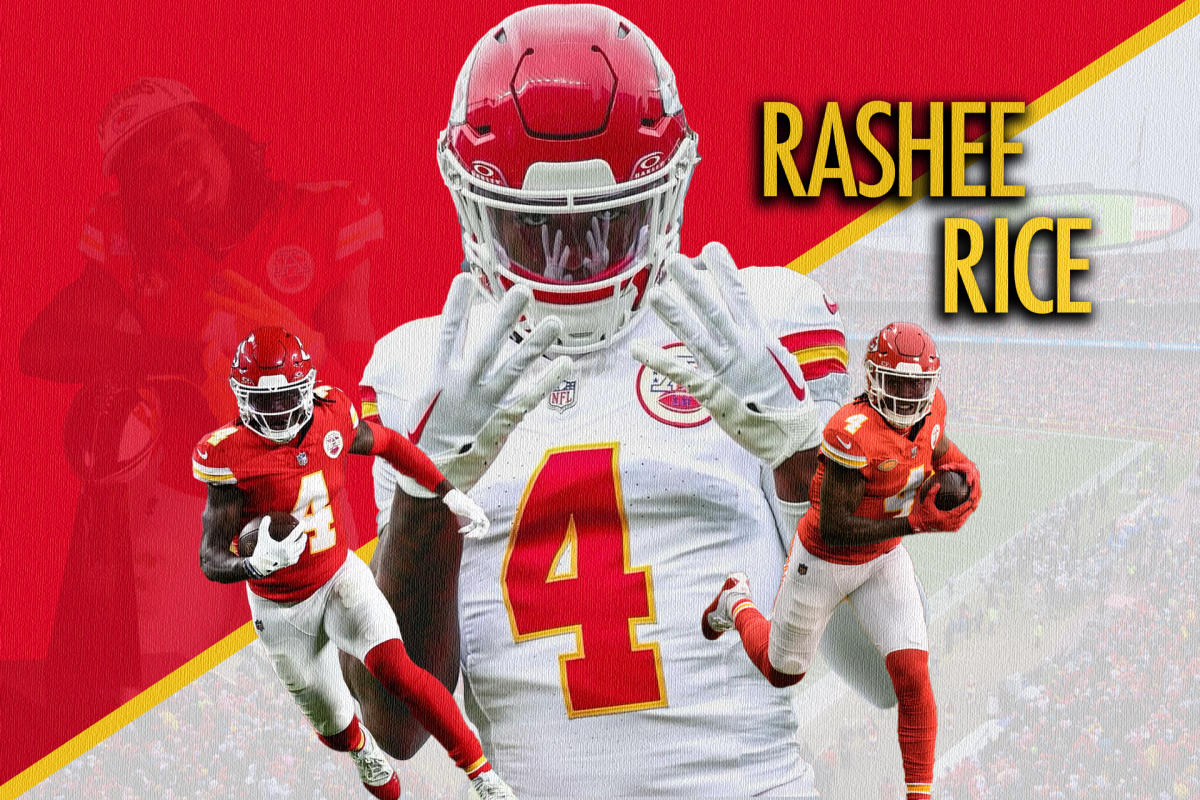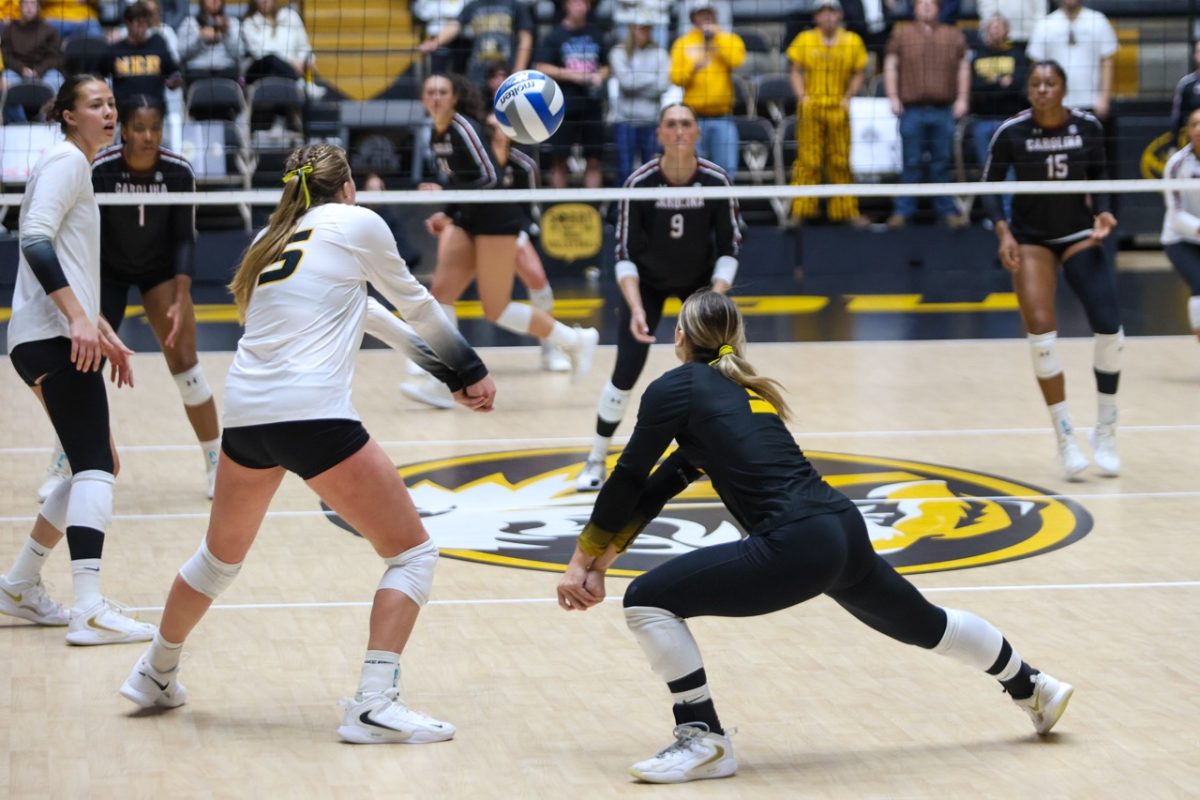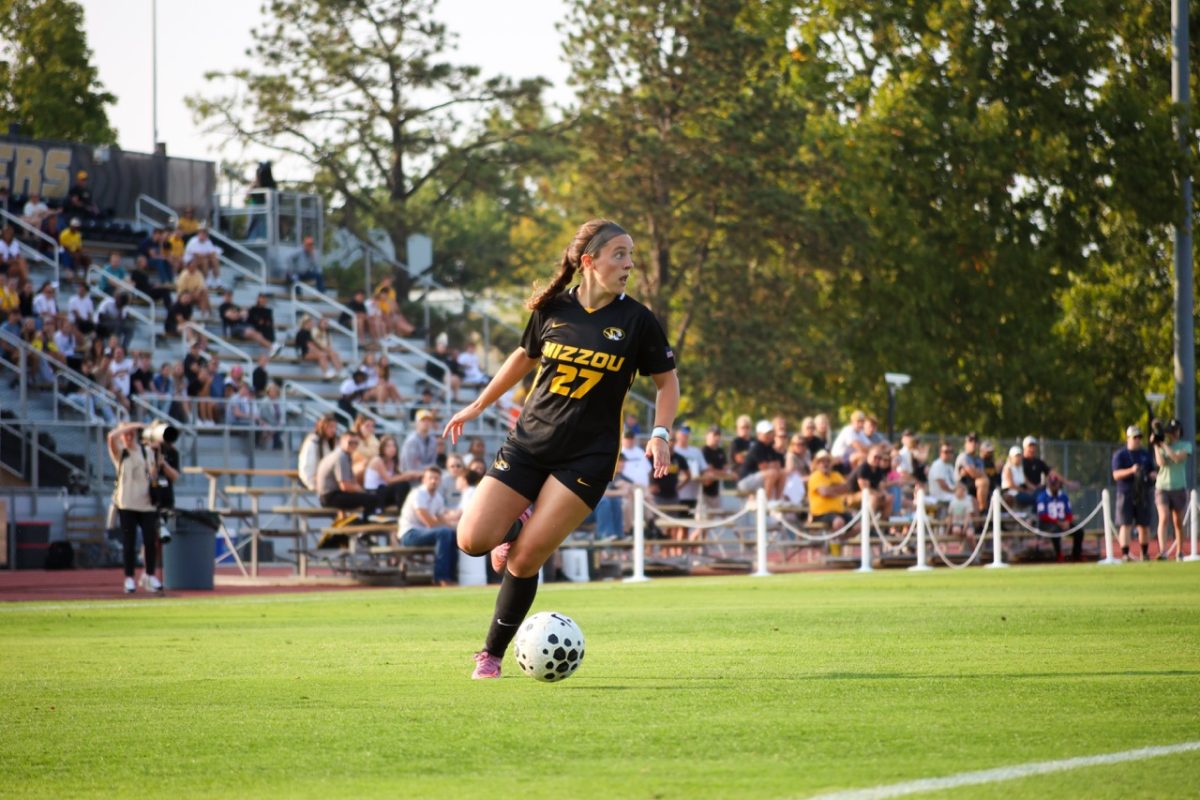_Editor’s Note: This story is the second in a series analyzing the contenders to be Missouri’s starting quarterback in the fall. You can find the first article, on Shawn Robinson, here._
With a new head ball coach and a pandemic in town, there are more than a few unknowns surrounding Missouri football. One of them, at least, is relatively straightforward: The Tigers will have a new starting quarterback come Sept. 5, and there’s competition for the role.
“That, to me, is probably the biggest question mark on our football team right now,” coach Eliah Drinkwitz told reporters on June 17.
Of course, after only three spring practices, Drinkwitz — and the public — have little to base a decision on, for right now.
Redshirt junior Shawn Robinson, who sat out the 2019 season after transferring from TCU, is the consensus favorite. As last year’s backups, redshirt junior Taylor Powell and redshirt freshman Connor Bazelak are also contenders.
To assemble in-depth scouting reports, _The Maneater_ chatted with Austyn Carta-Samuels, who served in a variety of roles with the Missouri program under Barry Odom, working heavily on quarterback development with the current crop of potential QBs and their predecessors, Kelly Bryant and Drew Lock. Outside of the coaches on the Tigers’ current staff, Carta-Samuels is perhaps the most familiar with Missouri’s quarterback prospects.
_The Maneater_ also dove into film and scoured stats to determine what each quarterback brings to the table.
We analyzed Shawn Robinson first, and now redshirt junior Taylor Powell is up.
###Path to Missouri###
Powell had quite a successful high school career with Fayetteville High School.
His school won back-to-back state championships in his junior and senior seasons, and Powell was named the MVP of both title games.
He won Arkansas’ Gatorade Player of the Year award following his senior year, when he threw for 3,473 yards and 44 touchdowns.
Powell has been a backup during time with Missouri, redshirting during his freshman year before sitting behind Lock and Bryant over the last two years.
During those two years, he completed 35 of his 76 passing attempts (46%) for 431 yards, one touchdown and two interceptions.
###Passing###
Powell’s stats come from a much smaller sample size than Robinson (or Missouri predecessors Bryant and Lock). Powell’s usage was also more sporadic, often coming in a few plays at the end of a game.
Momentum and continuity can certainly be significant factors in quarterback play. There are also some discrepancies in the situations Powell entered: the tail-end of a 32-point home win over Troy isn’t the same as a road game against then-No. 6 Georgia.
Still, the stats are worth considering. Powell’s completion percentage from 2018 and ‘19 (46%) is significantly lower than that of his competitors/predecessors. Robinson, Bryant and Lock all posted single-season completion percentages between 60 and 63 percent.
The gap is smaller with on-target percentage, but still very much present, which means Powell wasn’t just unlucky with wide receivers dropping his passes.
The key difference could be the type of throws that Powell was making. Sports Info Solutions’ air yardage data shows that Powell’s targets were, on average, 7.71 yards downfield. Robinson’s air yards per completion, for comparison, was 5.52.
The difficulty of deeper throws could be why Powell looks like a statistically less-accurate quarterback. Sample size and the conditions of those throws are certainly factors, too. But distance likely has something to do with it.
On tape, Powell looks capable of throwing deep. Take a look at one toss from Missouri’s 2019 spring game:
There are a lot of good things about this throw. Powell lets the play develop, and even though there’s a delayed blitz coming from a linebacker, he stays focused downfield. (Of course, this was a spring game, so the fact that the linebacker wasn’t going to de-cleat him might have boosted Powell’s confidence.)
The timing and placement of the ball are perfect, too. The receiver is able to catch the ball right before stepping out of bounds, no toe drag required. Even if the defensive back had been closer, Powell’s throw would probably still have been catchable only for the receiver — a sign of great placement.
“Mechanically, he is very, very detailed and very, very sound,” said Carta-Samuels.
There are some deep throws that aren’t as sound, though. Take one from the Tigers’ game against Arkansas, for example:
There are really four players who had a chance at catching this pass. Two of them were wearing Missouri jerseys, and one of them came down with the ball at the cost of an injury. This is the type of throw that seems to be more a case of luck than placement. Neither receiver looks particularly open, which makes a pass here risky.
But sometimes, luck is all it takes.
Size
“(Powell has) been doubted on some level,” Carta-Samuels said, “when he’s just short.”
Missouri lists Powell as 6-2, the same height as Robinson and one inch shorter than Bazelak and freshman Brady Cook.
Carta-Samuels pointed out that the average height of an NFL quarterback is a little over 6-3.
“That’s not to say there’s not a bunch of good quarterbacks that are six foot or 6-1, but there’s far less,” he said. “Taylor can go try to be Russell Wilson, he can go be Drew Brees. The model exists. Those guys are there, but you’re going to have to be excellent in every other area.”
Wilson stands 5-11 and Brees is six feet tall, but both are among the ranks of elite NFL quarterbacks.
Those two mark an exception, but the problem with shorter QBs tends to be throwing power.
“To me, it’s just (that) you have less of a lever,” Carta-Samuels said. “Your arm is less of a whip. So, as you generate power from your lower body, there’s just naturally a little bit less arm strength.”
Powell’s efforts to put power behind the ball show up on tape. On a free play against the Razorbacks, he was able to get plenty of zip on a pass:
That’s nothing to scoff at. There are times, though, where it almost seems like Powell puts too much emphasis on trying to throw hard, and his accuracy suffers.
An example from Missouri’s game at Georgia:
Perimeter-oriented plays like this one, center on one principle: Get the ball to the sideline as quickly as possible. This particular pass is made a little more complicated by running back Tyler Badie’s move to step as if he’s going downfield before looking back for the ball, but these throws are routine.
It looks like that in an effort to get the ball to Badie in powerful fashion, Powell put a little bit too much on the throw and sacrificed control. (Unrelated to Powell’s play, check out the Tigers’ offensive line on that play.)
The emphasis on arm strength is something Carta-Samuels said has marked a transition for Powell. The throw above is becoming an exception, rather than the rule.
“That’s the thing that, at first, he wasn’t all that comfortable with,” the former Missouri coach said. “Like he didn’t like the fact that maybe he couldn’t throw it exactly like Drew (Lock).”
The key to success for Powell isn’t necessarily about being able to throw harder — it’s about being able to focus on different aspects of the game, Carta-Samuels said.
“For (Powell), it will just be continuing to build anticipation with his receivers,” Carta-Samuels said.
Confidence
One of the most extended looks Missouri has gotten at Powell was the Tigers’ Nov. 9 game at Georgia.
Making his first career start, Powell faced the No. 6 Bulldogs in one of college football’s toughest environments: between the hedges in Athens.
He went 10-22 for 84 yards and one interception before leaving the game — not exactly a stellar performance. On the ESPN broadcast of the game, Powell looked nervous and tense in the pocket.
That was something to expect.
“I wouldn’t call it anything rare,” Carta-Samuels said. “It’s his first start. He’s playing the No. (6) team in the country in a night game on ESPN. So yeah, there are nerves there.”
The Georgia game is an example of why Powell’s sample size makes evaluation difficult.
“You almost have to be superhuman to step out in Athens, Georgia and rip it in your first game,” Carta-Samuels said.
Of the current quarterback crop, Powell’s been part of the Missouri program the longest. That likely won’t count for too much with a new coach and offense coming in.
Robinson brings more starting experience and dual-threat ability, which makes him the favorite. There’s still one more quarterback to go in The Maneater‘s analysis, though. Redshirt freshman Connor Bazelak is next.
Edited by Maia Bond | [email protected]
As part of its commitment to highlight organizations fighting for racial justice, the Maneater is encouraging readers to donate to Colin Kaepernick’s Know Your Rights Camp, which works to help communities of color through education and self-empowerment.


